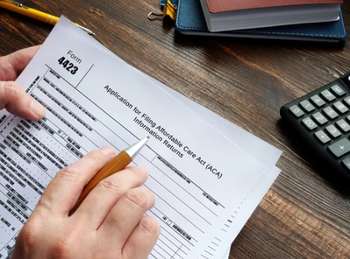
The American Journal of Managed Care
- October 2018
- Volume 24
- Issue 10
Medicare Underpayment for Diabetes Prevention Program: Implications for DPP Suppliers
The actual costs of implementing the evidence-based Diabetes Prevention Program (DPP) were compared with the latest reimbursement rates provided by CMS.
ABSTRACT
Objectives: To examine if Medicare reimbursements for the Diabetes Prevention Program (DPP) cover program costs.
Study Design: A retrospective modeling study.
Methods: A microcosting approach was used to calculate the costs of delivering DPP in 2016 to more than 300 patients from Montefiore Health System (MHS), a large healthcare system headquartered in Bronx, New York. Attendance and weight loss outcomes were used to estimate Medicare reimbursement. We also modeled revenue assuming that our program outcomes had been similar to those observed in national data.
Results: The 1-year cost of delivering DPP to 322 participants in 2016 was $177,976, or $553 per participant. The costliest components of delivery were direct instruction (28% of total cost) and patient outreach, enrollment, and eligibility confirmation (24%). Based on our program outcomes (14.3% lost ≥5% of their initial weight and 50% attended ≥4 sessions), MHS would be reimbursed $34,625 ($108/patient). If outcomes were in line with national CDC reports (eg, better attendance and weight loss outcomes), MHS would have been reimbursed $61,270 ($190/patient).
Conclusions: In a large urban health system serving a diverse population, the costs of delivering DPP far outweighed Medicare reimbursement amounts. Analyzing and documenting the costs associated with delivering the evidence-based DPP may inform prospective suppliers and payers and aid in advocacy for adequate reimbursement.
Am J Manag Care. 2018;24(10):475-478Takeaway Points
The evidence-based Diabetes Prevention Program (DPP) is among the most widely implemented efforts to reduce the burden of type 2 diabetes in the United States.
- Within a large and diverse integrated healthcare system, we estimated that it costs an average of $553 to deliver the program to each participating patient.
- Based on final CMS reimbursements, our healthcare system would have received $108 per patient.
- To encourage implementation of DPP, it is crucial that reimbursements be aligned with costs of program delivery.
To date, one of the most successful and scalable interventions to reduce diabetes among high-risk individuals is the Diabetes Prevention Program (DPP). In a randomized controlled trial, the DPP lifestyle intervention, which emphasizes modest weight loss and increased physical activity, significantly reduced the risk of diabetes.1
In its original form, DPP could not be sustainably scaled by community organizations.2 The trial included 1-on-1 coaching with a healthcare professional, supervised exercise classes, and substantial monetary study incentives and tools (eg, grocery vouchers). To reduce program costs, estimated at approximately $1400 per participant at the time, several changes were made. Group sessions replaced 1-on-1 sessions and the community became the primary place of delivery.3 Additionally, incentives were removed and physical activity shifted from private/coach-led to memberships at local fitness facilities or simply by encouraging physical activity. These changes reduced the intensity of the intervention while slightly affecting efficacy and became the basis for the CDC’s National DPP (NDPP). A recent study found that among more than 10,000 participants in NDPP, the median weight loss was 4.2%, less than the 6% from the original trial.4 To date, more than 1750 organizations are seeking or have received recognition as an NDPP supplier.5
In 2016, CMS announced that Medicare would offer reimbursement for DPP beginning in 2018. In November 2017, a final rule detailing the payment structure was released.6 Because little is known about the actual costs of DPP, CMS considered a number of factors in its payment methodology, including looking at similar covered services. CMS referenced Medicare reimbursement of $10 per patient for 30 minutes of group education and training for patient self-management by a nonphysician health professional for 5 to 8 patients (Current Procedural Terminology code 98962).6
Although strides have been made to make DPP sustainable and scalable, implementing the program may be cost-prohibitive if reimbursement levels are insufficient. Therefore, it is important to understand the cost inputs of DPP to create adequate reimbursement and to help prospective suppliers understand the implementation costs. This study aims to describe the various cost inputs in a real-world large-scale DPP implementation and compare them with the CMS reimbursement rates using the experience of Montefiore Health System (MHS), a large healthcare system in Bronx, New York. MHS implemented DPP in partnership with the YMCA of Greater New York from 2011 to 2015 and on its own since 2015.7 To date, the Montefiore DPP has served more than 1350 patients.7,8
METHODS
To estimate the costs of implementing the DPP in a single year (2016), we used a microcosting strategy. Key informant interviews, program data, and supply orders were used to estimate the costs of delivering DPP. First, we identified fixed costs associated with DPP delivery. These fixed costs included the annual salary of a full-time DPP coordinator. The coordinator is responsible for conducting outreach, confirming patient eligibility by briefly reviewing the electronic health record (EHR), providing administrative and clerical support to the program, and teaching some classes. Additional fixed costs were staff salaries, including 25% of the salary of a manager, 5% of that of a project manager, and 5% of a data analyst to manage data and CDC reporting.
Semivariable expenses included DPP class instruction, which depended on the job classification of the lifestyle coach (eg, health educator or community health worker) and whether the class was taught during normal working hours or not. For classes taught on weekends or evenings, coaches were given “session pay” (ie, overtime). Based on key informant interviews, each hour of classroom instruction required an additional 1.75 hours to remind patients about classes, travel to the class, set up the classroom, conduct make-up sessions, and document attendance, weight, and physical activity. For health educators, who taught a majority of classes, the cost for teaching plus the additional time was $94.48 per session.
Additional variable expenses included the printed materials for the core and maintenance curriculum guides ($22.34/unit and $19.92/unit, respectively). We accounted for the costs associated with facilitator guides, training DPP instructors, and the costs of clinical quality scales. The costs of becoming a DPP master trainer, which is required to train certified instructors, were also included. Lastly, the costs of incentives, such as pedometers, water bottles, and salad bowls, were calculated by reviewing previous orders.
For program revenue, we used data from the 2016 program year, when 322 patients began attending 1 of 22 class cycles. Attendance at each class was measured and average weight loss was calculated to estimate revenue per the CMS rules.7 The final revenue thresholds provided by CMS are described in
RESULTS
Overall, the costs of implementing DPP at MHS were $177,976, or $553 per participant attending 1 or more sessions in 2016.
Based on our program experience, the average number of classes attended per patient was 6.4. Among all individuals, including those who attended only a single session and, therefore, had no follow-up weights, 14.3% of patients lost at least 5% of their initial weight. Fifty percent of participants attended 4 or more sessions and 33% attended 9 or more (
Additional analyses modeled reimbursement assuming that our outcomes had been aligned with national outcomes presented by CDC.4 If MHS had achieved these outcomes, the reimbursement would be $61,270, or $190 per patient, covering 34.4% of costs.
DISCUSSION
Based on our program experience, Medicare reimbursement would cover just 19.5% of program costs. This shortfall is only partially explained by the relatively poorer outcomes of our program. Compared with other DPP implementations, our program had poorer attendance, driven mostly by a large number of drop-outs between sessions 1 and 2. A recent evaluation of NDPP data found that the median number of sessions attended was 14 and that 86.6% attended 4 or more sessions.4 Comparatively, MHS’ mean attendance was 6.4 sessions and the median was 4, due to a large number of drop-outs after the first class (among those attending ≥4 sessions, median attendance was 12 sessions). Half of the patients dropped out before class 4 compared with 13.4% nationally.
These differences in attendance outcomes may be driven by geographic and/or demographic differences in attendance and/or differences in program delivery. For instance, some programs hold a “class zero” orientation session prior to the first session, which reduces early drop-outs. Implications for poorer attendance in certain patient populations mean that DPP suppliers who serve them have to expend additional resources conducting outreach, sending reminders, and providing meaningful incentives. It is critical to note that the intensity and length of DPP may not be feasible for many patients, including those with inconsistent work schedules and complex family demands. Given that nationally only one-third of patients reached the 5% weight loss threshold across all of the implementations, it is imperative that CMS recognize this in its pay-for-performance methodology. Even if our program had outcomes identical to the national CDC-reported data, there would still be a considerable shortfall in revenue of about $363 per patient (34.4% of program costs would be covered).
Notably, in these national data, Hispanic and non-Hispanic black participants had lower median attendance (11 and 13 sessions, respectively) than non-Hispanic white participants (16 sessions).4 Furthermore, outcomes among Hispanic (median weight loss of 3.0%) and non-Hispanic black (2.6%) participants were worse than for non-Hispanic whites (4.4%) nationally. At MHS, more than 90% of DPP participants are Hispanic or non-Hispanic black, compared with 23.8% nationally.4 This major demographic difference may be an additional explanation for the poorer outcomes among MHS participants.
It is important to quantify the true costs of delivering programs like DPP, which sit outside of the traditional clinical encounter. Program costs do not decrease when patients do not attend classes. Instructors are still paid, the encounter is still documented, materials are still printed, and the program is still managed. Therefore, the CMS payment, which underpays for both attendance and performance, will be insufficient for most, if not all, DPP suppliers. Furthermore, given the strong correlation between attendance and weight loss, the payment structure is paying for the same outcome twice. Lastly, so few patients achieve 9% weight loss that this payment benchmark has little utility.
DPP program costs are significant and most are not variable, because activities such as program coordination, outreach, EHR documentation, instruction, and reporting all occur whether or not participants attend classes. Placement- and instruction-related costs account for just over half (52%) of costs. Another 38% of costs are for program coordination, staff management, and data reporting; 9% are for instruction materials for coaches and patients; and 2% are for patient incentives. Because of significant fixed/semivariable program costs, DPP is not well suited for reimbursement based on a threshold number of classes or largely skewed toward pay-for-performance for weight loss thresholds that exceed common experience. Rather, a baseline of fee-for-service reimbursement on a per class basis with a potential pay-for-performance bonus for each percentage point of weight loss would align payments with costs. This payment structure also acknowledges the diabetes risk reduction with weight loss less than the 5% threshold.9 For our program to break even at current levels of performance with regard to attendance and weight loss, we would need $88.71 per patient per session attended. If we achieved the national outcomes, break-even revenue would be $42.28 per session attended.
CONCLUSIONS
It is important to analyze, document, and disseminate the costs associated with DPP implementation to inform prospective suppliers and payers and to advocate for appropriate reimbursement. As healthcare systems wrestle with the relative value of prevention versus treatment, it is important for NDPP suppliers to quantify outcomes beyond weight loss. Additional value can be demonstrated by documenting reductions in glycated hemoglobin, blood pressure, and/or cholesterol and, more importantly, long-term outcomes like diabetes incidence. It is important for CMS to consider the real-world costs of program delivery when setting reimbursement rates.
Acknowledgments
The authors wish to thank Nicole Hollingsworth, Melinda Marquez, and Elizabeth Spurrell-Huss for contributing their input and expertise to the estimation of program costs.Author Affiliations: Montefiore Health System (ASP, CDR), Bronx, NY; Department of Family & Social Medicine (ASP) and Department of Epidemiology & Population Health (CDR), Albert Einstein College of Medicine, Bronx, NY; Columbia Business School (VR), New York, NY; New York State Health Foundation (BS, MZ), New York, NY.
Source of Funding: None.
Author Disclosures: The authors report no relationship or financial interest with any entity that would pose a conflict of interest with the subject matter of this article.
Authorship Information: Concept and design (ASP, VR, MZ, CDR); acquisition of data (VR, CDR); analysis and interpretation of data (VR, BS, MZ, CDR); drafting of the manuscript (ASP, BS, MZ, CDR); critical revision of the manuscript for important intellectual content (ASP, BS, CDR); statistical analysis (CDR); provision of patients or study materials (CDR); administrative, technical, or logistic support (ASP, CDR); and supervision (ASP, CDR).
Address Correspondence to: Colin D. Rehm, PhD, MPH, Office of Community & Population Health, Montefiore Health System, 3514 Dekalb Ave, Bronx, NY 10467. Email: crehm@montefiore.org.REFERENCES
1. Knowler WC, Barrett-Connor E, Fowler SE, et al; Diabetes Prevention Program Research Group. Reduction in the incidence of type 2 diabetes with lifestyle intervention or metformin. N Engl J Med. 2002;346(6):393-403. doi: 10.1056/NEJMoa012512.
2. Ackermann RT, Finch EA, Brizendine E, Zhou H, Marrero DG. Translating the Diabetes Prevention Program into the community: the DEPLOY pilot study. Am J Prev Med. 2008;35(4):357-363. doi: 10.1016/j.amepre.2008.06.035.
3. Hernan WH, Brandle M, Zhang P, et al; Diabetes Prevention Program Research Group. Costs associated with the primary prevention of type 2 diabetes mellitus in the Diabetes Prevention Program. Diabetes Care. 2003;26(1):36-47. doi: 10.2337/diacare.26.1.36.
4. Ely EK, Gruss SM, Luman ET, et al. A national effort to prevent type 2 diabetes: participant-level evaluation of CDC’s National Diabetes Prevention Program. Diabetes Care. 2017;40(10):1331-1341. doi: 10.2337/dc16-2099.
5. National Diabetes Prevention Program: registry of all recognized organizations. CDC website. nccd.cdc.gov/DDT_DPRP/Registry.aspx. Accessed November 1, 2017.
6. CMS, HHS. Medicare program; revisions to payment policies under the physician fee schedule and other revisions to Part B for CY 2018; Medicare Shared Savings Program requirements; and Medicare Diabetes Prevention Program. Fed Regist. 2017;82(219):52976-53371.
7. Rehm CD, Marquez ME, Spurrell-Huss E, Hollingsworth N, Parsons AS. Lessons from launching the Diabetes Prevention Program in a large integrated health care delivery system: a case study. Popul Health Manag. 2017;20(4):262-270. doi: 10.1089/pop.2016.0109.
8. Chambers EC, Rehm CD, Correra J, et al. Factors in placement and enrollment of primary care patients in YMCA’s Diabetes Prevention Program, Bronx, New York, 2010-2015. Prev Chronic Dis. 2017;14:E28. doi: 10.5888/pcd14.160486.
9. Maruthur NM, Ma Y, Delahanty LM, et al; Diabetes Prevention Program Research Group. Early response to preventive strategies in the Diabetes Prevention Program. J Gen Intern Med. 2013;28(12):1629-1636. doi: 10.1007/s11606-013-2548-4.
Articles in this issue
about 7 years ago
From the Editorial Board, October 2018: Bruce W. Sherman, MDabout 7 years ago
Recent Study on Site of Care Has Severe Limitationsabout 7 years ago
The Authors Respond and Stand Behind Their Findingsabout 7 years ago
Gatekeeping and Patterns of Outpatient Care Post Healthcare Reformabout 7 years ago
CMS HCC Risk Scores and Home Health Patient Experience MeasuresNewsletter
Stay ahead of policy, cost, and value—subscribe to AJMC for expert insights at the intersection of clinical care and health economics.









































